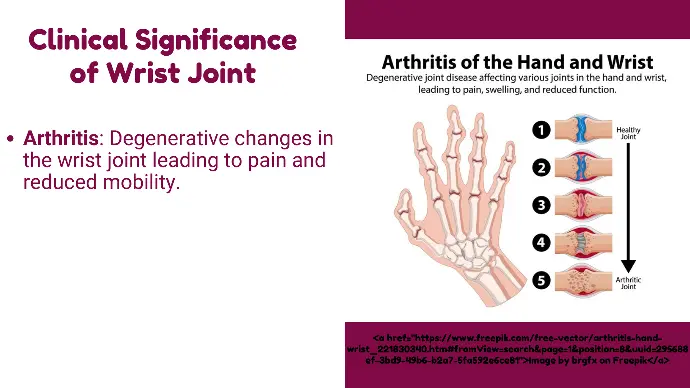Wrist Joint
The wrist joint is also known as Radiocarpal joint.
Because it connects lower end of radius to Proximal Carpal bones of the hand (Scaphoid, Lunate and Triquetral bones).
It is an ellipsoid variety of Synovial joint.
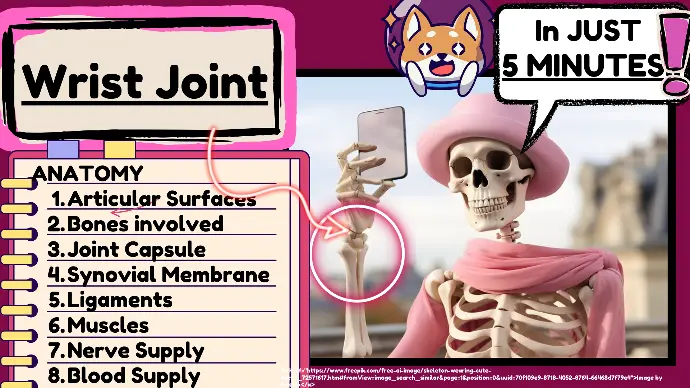
Anatomy of the Wrist Joint
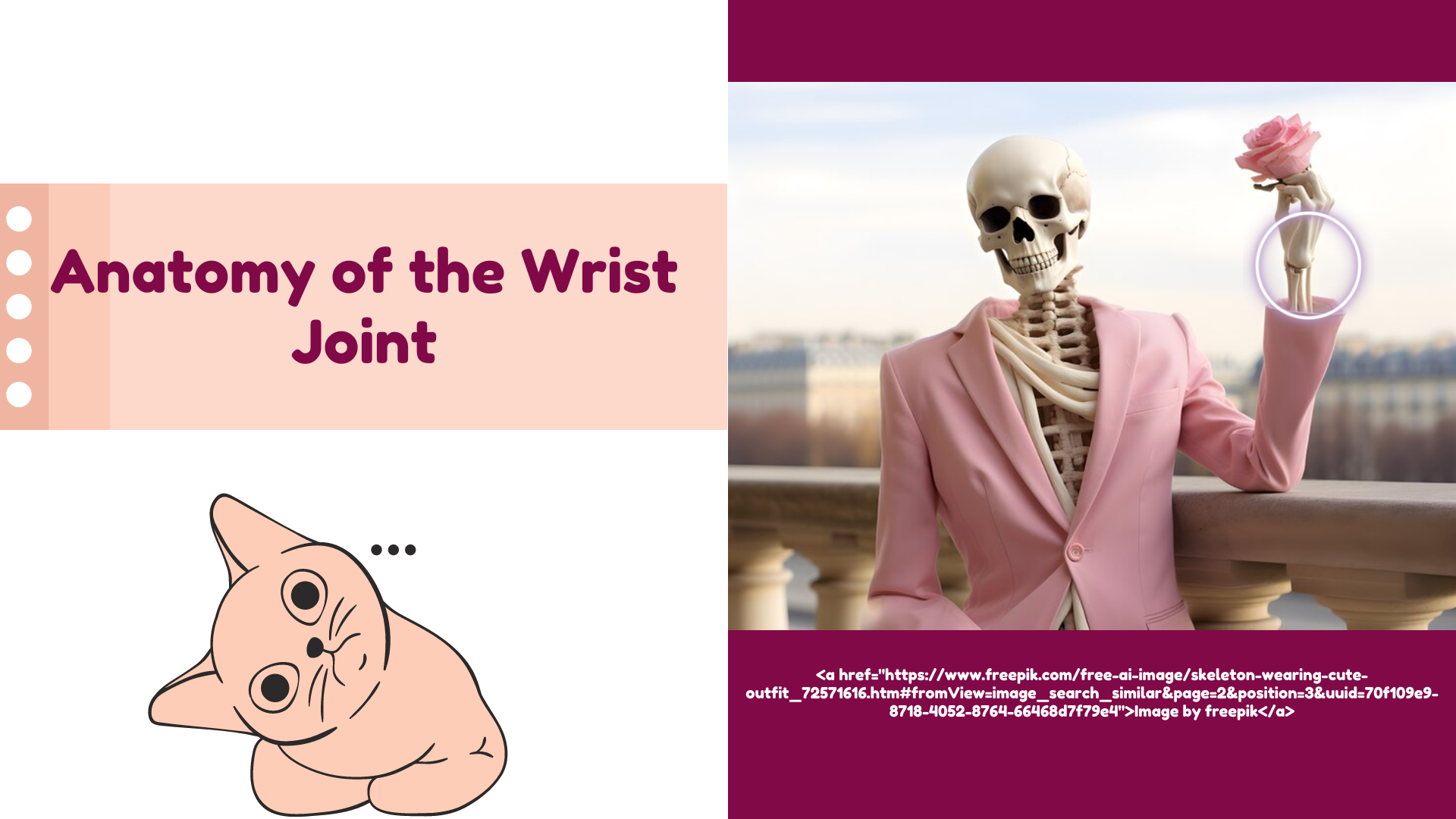
Following Points will be discussed in the anatomy of wrist joint.
- Articular Surfaces
- Bones involved
- Joint Capsule
- Synovial Membrane
- Ligaments of Wrist Joint
- Muscles of Wrist Joint
- Nerve Supply
- Blood Supply
1. Articular Surfaces
Following Surfaces join together to form the wrist joint.
Superiorly:
- Lower end of Radius
- Articular disc of inferior Radioulnar joint.
Inferiorly:
- Scaphoid
- Lunate
- Triquetral Bones
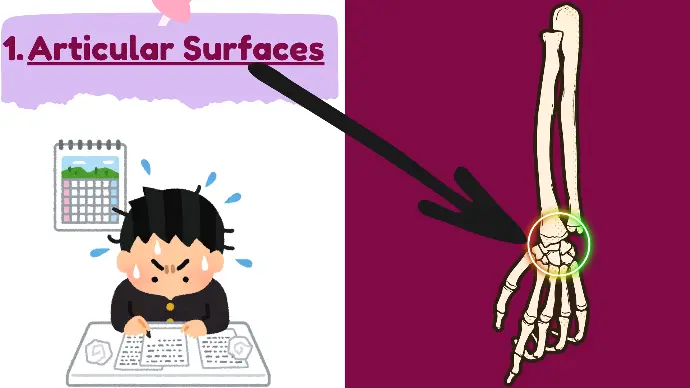
2. Bones Involved
Following Bones form the Wrist Joint.
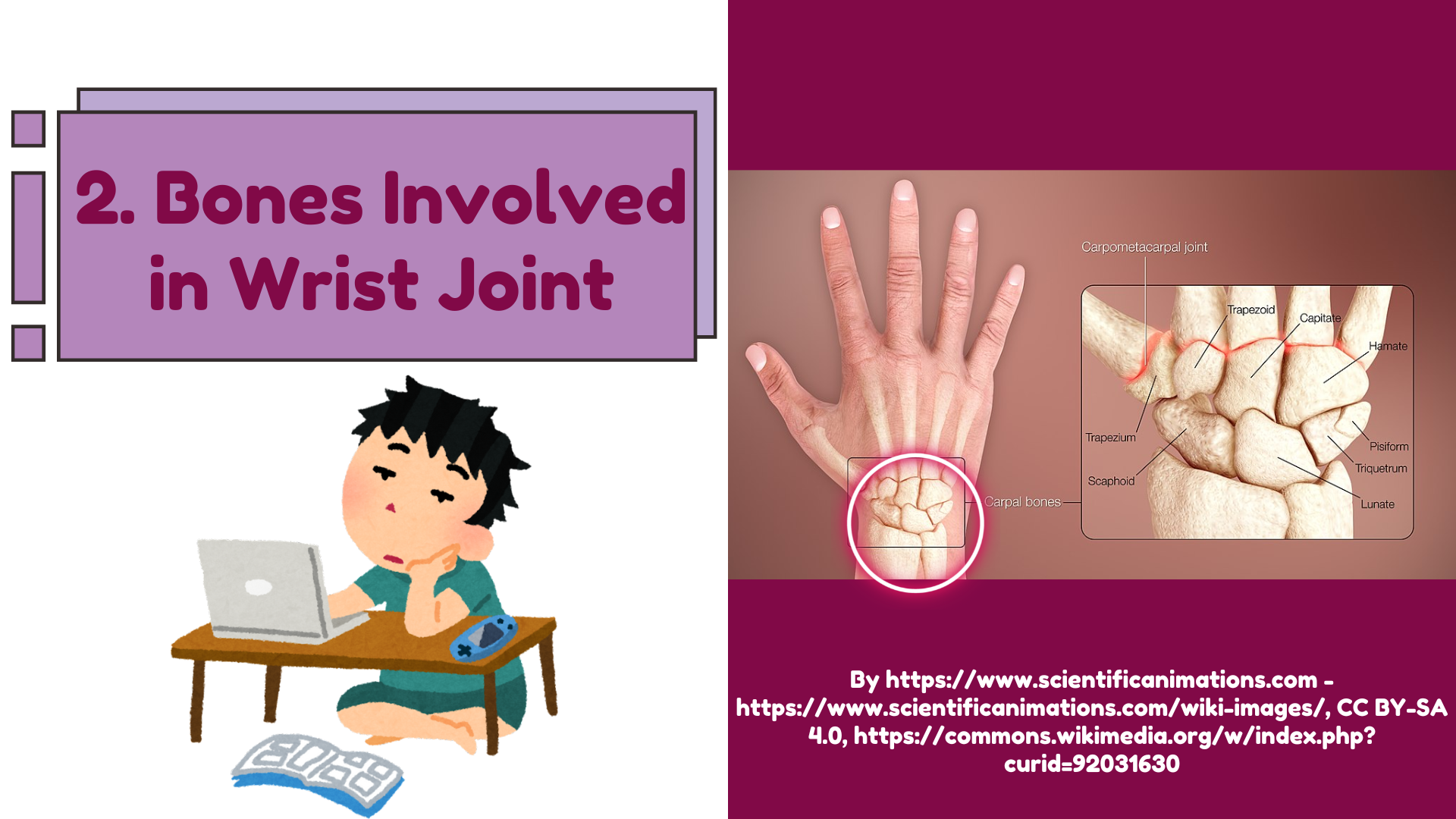
Radius: The larger of the two forearm bones, forming the majority of the wrist joint articulation.
Ulna: The smaller forearm bone, which articulates with the radius but not directly with the carpal bones.
Carpal Bones: Eight small bones arranged in two rows:
- Proximal Row: Scaphoid, Lunate, Triquetrum, Pisiform.
- Distal Row: Trapezium, Trapezoid, Capitate, Hamate.
3. Joint Capsule
- It is a fibrous capsule that surrounds the wrist joint.
- It provides stability and enclosing the joint space.
- It is attached superiorly to the lower ends of Radius and Ulna.
- It is attached inferiorly to the proximal row of Carpal Bones.
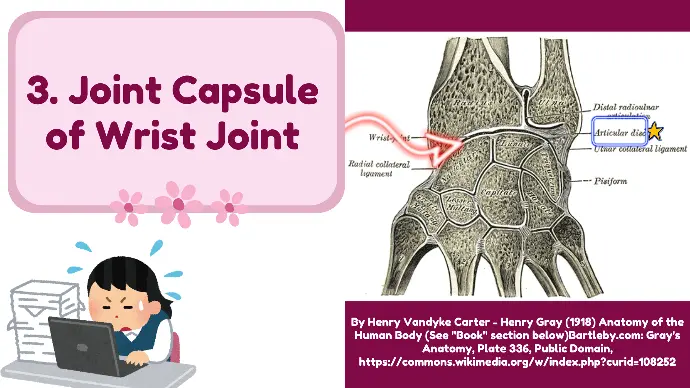
4. Synovial Membrane
It is the inner lining of the joint capsule that secretes synovial fluid to lubricate the joint.
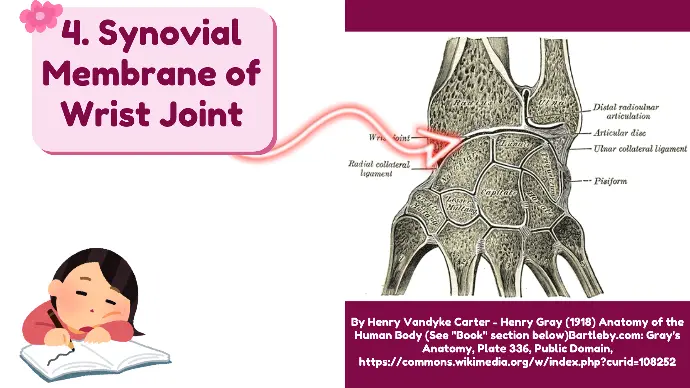
5. Ligaments of Wrist Joint
There are three types of Ligaments of Wrist Joint.
- Palmar Ligaments
- Dorsal Ligaments
- Collateral Ligaments
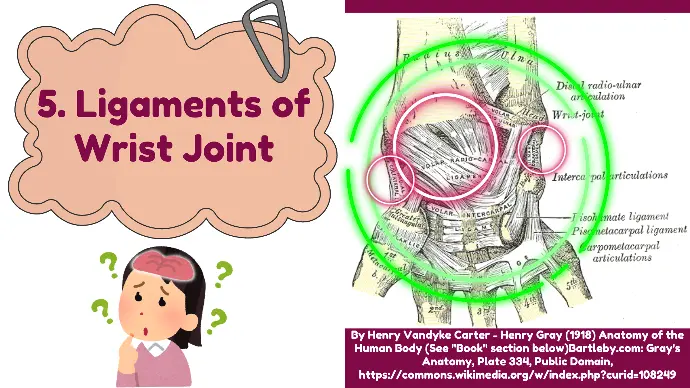
1. Palmar Ligaments
On the palmar aspect of Wrist, there are two types of ligaments.
- Palmar Radiocarpal Ligament: Connects the radius to the carpal bones on the palmar side. These carpal bones are Scaphoid, Lunate and Triquetral Bones.
- Palmar Ulnocarpal Ligament: Connects the ulna to the carpal bones on the palmar side. These carpal bones are Lunate and Triquetral bones.
2. Dorsal Ligaments:
On the Dorsal aspect of Wrist, there is only one Dorsal ligament.
Dorsal Radiocarpal Ligament: Connects the radius to the Dorsal surface of the Carpal bones. These carpal bones are Scaphoid, Lunate and Triquetral Bones.
3. Collateral Ligaments
There are two collateral ligaments. One is on Lateral side of wrist, and the other is on medial side of wrist.
- Radial Collateral Ligament: it is on the lateral side of wrist. It Extends from the radial styloid process to the lateral side of scaphoid bone, providing lateral stability. It is related to Radial Artery.
- Ulnar Collateral Ligament: it is on the Medial side of the wrist. It Extends from the ulnar styloid process to the triquetrum and pisiform, providing medial stability.
6. Muscles of Wrist Joint
Important Muscles of Wrist Joint are:
- Flexor Muscles
- Extensor Muscles
- Other Muscles
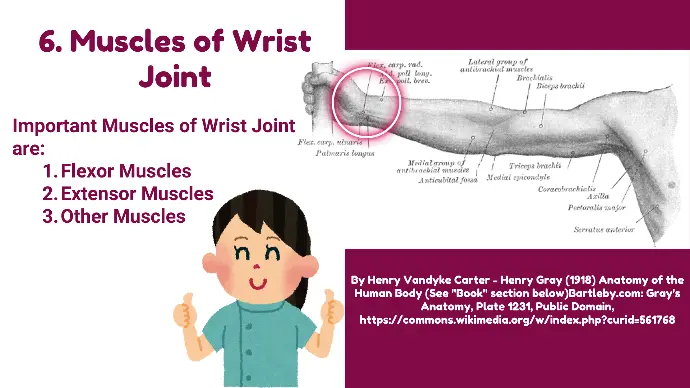
1. Flexor Muscles
The Main Flexor Muscles of wrist are:
- Flexor Carpi Radialis
- Flexor Carpi Ulnaris
- Palmaris Longus
2. Extensor Muscles
The main extensors of wrist are:
- Extensor Carpi Radialis Longus
- Extensor Carpi Radialis Brevis
- Extensor Carpi Ulnaris
3. Other Muscles
Other important muscles of wrist are:
- Flexor Digitorum Superficialis
- Flexor Digitorum Profundus
- Extensor Digitorum
- Extensor Pollicis Longus and Brevis
- Abductor Pollicis Longus
7. Nerve Supply of Wrist Joint
Following Nerves supply the wrist joint.
- Anterior interosseous Nerve
- Posterior interosseous Nerve
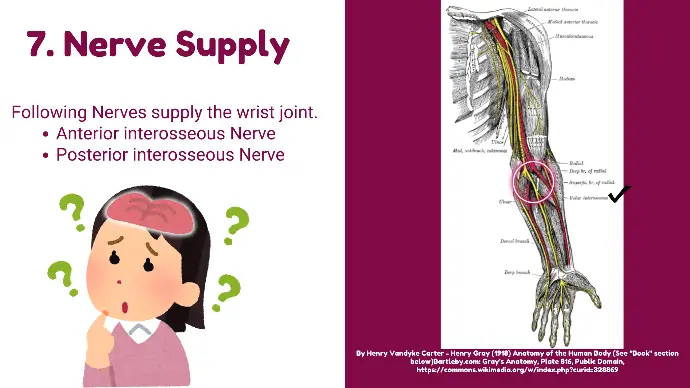
8. Blood Supply of Wrist Joint
Following Blood Vessels supply the wrist joint.
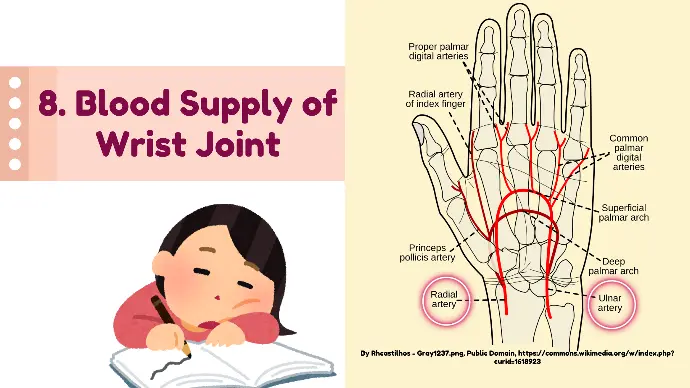
- Radial Artery: Supplies the lateral aspect of the wrist and hand.
- Ulnar Artery: Supplies the medial aspect of the wrist and hand.
- Anterior Interosseous Artery: Supplies the deep muscles of the forearm and wrist.
- Posterior Interosseous Artery: Supplies the extensor muscles of the forearm and wrist.
Clinical Significance
Common Pathologies
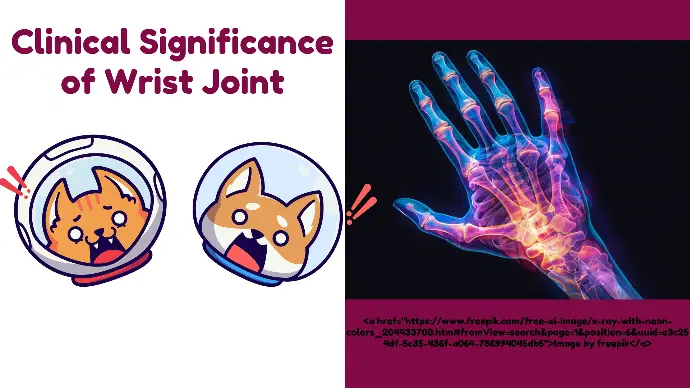
1. Fractures:
Common fractures include distal radius fractures (Colles' fracture) and scaphoid fractures.

2. Carpal Tunnel Syndrome:
Compression of the median nerve as it passes through the carpal tunnel, causing pain and numbness.
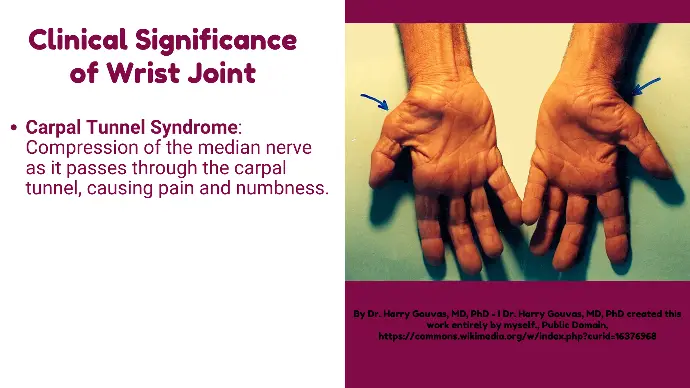
3. De Quervain's Tenosynovitis:
Inflammation of the tendons on the thumb side of the wrist.
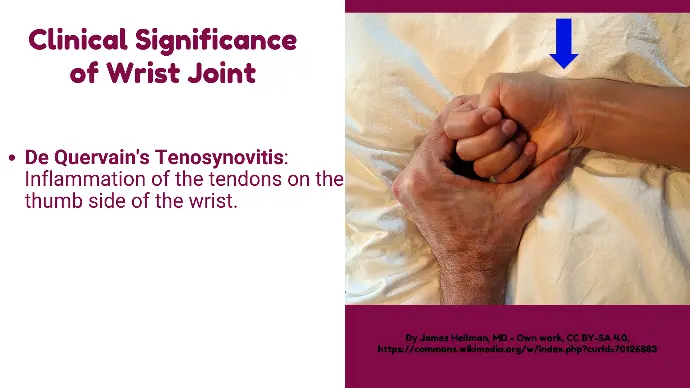
4. Wrist Sprains:
Stretching or tearing of ligaments due to trauma.
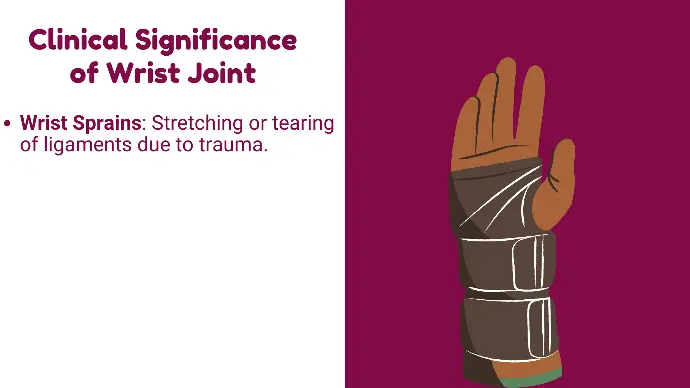
5. Arthritis of Wrist Joint:
Degenerative changes in the wrist joint leading to pain and reduced mobility.
